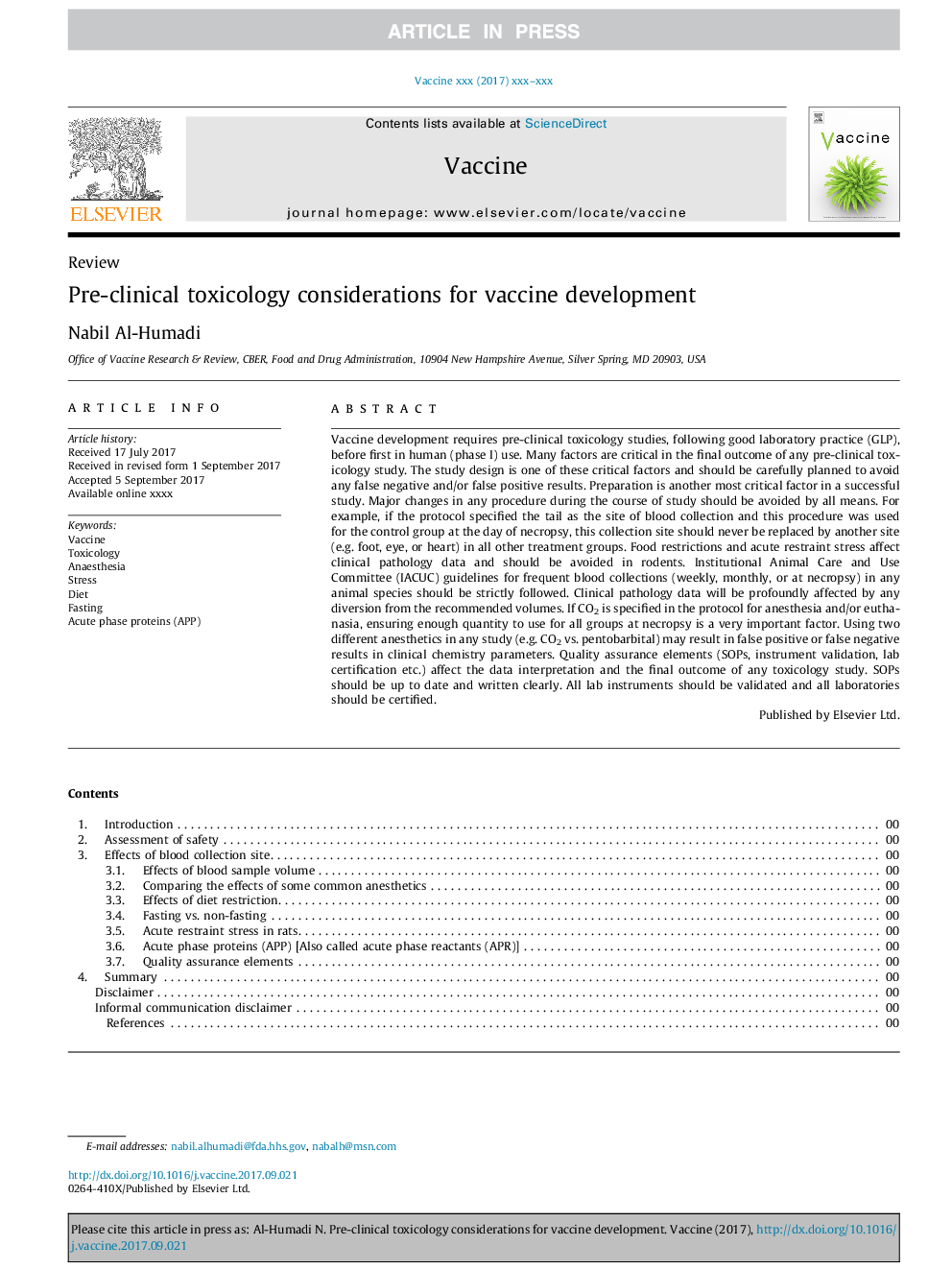| کد مقاله | کد نشریه | سال انتشار | مقاله انگلیسی | نسخه تمام متن |
|---|---|---|---|---|
| 5536847 | 1402308 | 2017 | 6 صفحه PDF | دانلود رایگان |
عنوان انگلیسی مقاله ISI
Pre-clinical toxicology considerations for vaccine development
ترجمه فارسی عنوان
ملاحظات سم شناسی قبل از بالینی برای توسعه واکسن
دانلود مقاله + سفارش ترجمه
دانلود مقاله ISI انگلیسی
رایگان برای ایرانیان
کلمات کلیدی
موضوعات مرتبط
علوم زیستی و بیوفناوری
ایمنی شناسی و میکروب شناسی
ایمونولوژی
چکیده انگلیسی
Vaccine development requires pre-clinical toxicology studies, following good laboratory practice (GLP), before first in human (phase I) use. Many factors are critical in the final outcome of any pre-clinical toxicology study. The study design is one of these critical factors and should be carefully planned to avoid any false negative and/or false positive results. Preparation is another most critical factor in a successful study. Major changes in any procedure during the course of study should be avoided by all means. For example, if the protocol specified the tail as the site of blood collection and this procedure was used for the control group at the day of necropsy, this collection site should never be replaced by another site (e.g. foot, eye, or heart) in all other treatment groups. Food restrictions and acute restraint stress affect clinical pathology data and should be avoided in rodents. Institutional Animal Care and Use Committee (IACUC) guidelines for frequent blood collections (weekly, monthly, or at necropsy) in any animal species should be strictly followed. Clinical pathology data will be profoundly affected by any diversion from the recommended volumes. If CO2 is specified in the protocol for anesthesia and/or euthanasia, ensuring enough quantity to use for all groups at necropsy is a very important factor. Using two different anesthetics in any study (e.g. CO2 vs. pentobarbital) may result in false positive or false negative results in clinical chemistry parameters. Quality assurance elements (SOPs, instrument validation, lab certification etc.) affect the data interpretation and the final outcome of any toxicology study. SOPs should be up to date and written clearly. All lab instruments should be validated and all laboratories should be certified.
ناشر
Database: Elsevier - ScienceDirect (ساینس دایرکت)
Journal: Vaccine - Volume 35, Issue 43, 13 October 2017, Pages 5762-5767
Journal: Vaccine - Volume 35, Issue 43, 13 October 2017, Pages 5762-5767
نویسندگان
Nabil Al-Humadi,
